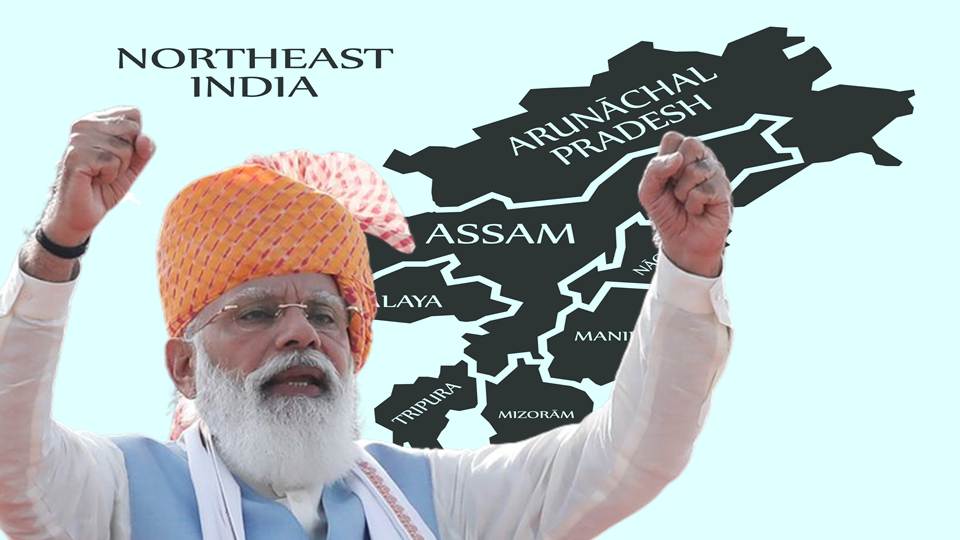The north-eastern states of India, the majority of whose names are difficult for the average Indian to grasp, have a dark history. A legacy that includes, colonial history, integration with India, perennial insurgency, and an inadequate transportation network among other things.
The biggest surge in the hearts of the north-eastern people, however, is the step-motherly treatment they received from the Congress governments at the centre after their integration.
However, in the last eight years, the Narendra Modi government has rewritten history by conquering geography. The central government now sees North-East as a ‘Gateway to the East’ contrary to Congress’ apathy.
Peaceful and Prosperous North-East: Centre’s vision
A major part of the North-Eastern states was gripped under insurgency. The main reason being Congress’ apathy towards the region and distancing the region from mainstream India. However, the dynamics are shifting, and Union Home Minister Amit Shah’s dedication to a peaceful and thriving northeast is evidence of this.
Read more: Why North East India will vote en masse for Prime Minister Modi?
To bring peace, the central government has been involved in negotiations with different groups since its inception. In continuation of the same, Shah on monday met several political leaders of Naga groups over peace accords, and clarified that the Modi government wants to have a peaceful and prosperous northeast.
The spokesperson said, “All the efforts of the central government are aimed at resolving complicated issues that came up during the ongoing talks with Naga groups like NSCN-IM in a way that there is all-round satisfaction at the conclusion of the parleys.”
The tough road ahead
While in majority of the states, the menace of insurgency has been tackled through negotiations, the state of Nagaland still has been a tough call for the leaders. The current talks with the NSCN-IM are not reaching to any conclusion as the group insists on a separate Naga flag and constitution, which has been constantly rejected by the Modi government.
The central government is using every persuasive method to conclude the peace talks and establish eternal peace in the beautiful north-eastern Indian states. But, these unrealistic demands of the group NSCN-IM have become a roadblock to peace.
In the 2015 framework agreement, the centre and NSCN (I-M) parties reached an agreement that “the settlement will be within the Indian federation with a special status.”
The road ahead may be difficult, but given the track record, peace will soon prevail in Nagaland as well, and through diplomatic channels.
The administration has already reached ceasefire deals with the NSCN-NK, the NSCN-R, the NSCN K-Khango, and the NSCN (K) Niki. It would not be an exaggeration to conclude that the end of the insurgency is nearing.
How PM Modi transformed North-East
Before 2014, the north-eastern region was neglected and was deprived of basic facilities like transportation, education, health facilities. The double engine government model, with BJP ruling both at the centre and the state, has succeeded in bringing the Government of India to the doorstep of the northeast region.
Recently, AFSPA was also withdrawn from major areas of Assam, Nagaland and Manipur. The Modi government has also turned the tokenised ‘Look East’ policy into ‘Act East’ policy. The BJP governments have also facilitated development in the northeast region along with connectivity. The government is investing billions of rupees into infrastructural development that is integrating North East with the mainstream.
Support TFI:
Support us to strengthen the ‘Right’ ideology of cultural nationalism by purchasing the best quality garments from TFI-STORE.COM
Also Watch:

